Chiang Mai is known for its temples and its slow pace of life. It is one of the most popular destinations in Thailand and there are plenty of reasons for that! Here are some of the top things to do in and around Chiang Mai, as well as some more unusual sights and activities you can experience.
Quick answers
Essential things to do in Chiang Mai: Doi Suthep, Night Bazaar, Bicycle Tour
Best day trips from Chiang Mai: Elephant Sanctuary, Doi Inthanon National Park, Chiang Mai Canyon, Sticky Waterfalls
Unique things to do: Massage by an ex-con, Learn Muay Thai, Monk chat, Bor Sang village market
Plan your stay in Chiang Mai
Doi Suthep Temple and National Park
The temple on the hill above Chiang Mai is a must-see, not only for the impressive golden chedi but also the stunning view down onto the city.
But Doi Suthep is also the name of the national park and is home to one of Thailand’s Royal Palaces.
Getting there is fairly easy. Simply take a songthaew in the city (the red vans that act as a bus/taxi combination in Chiang Mai).
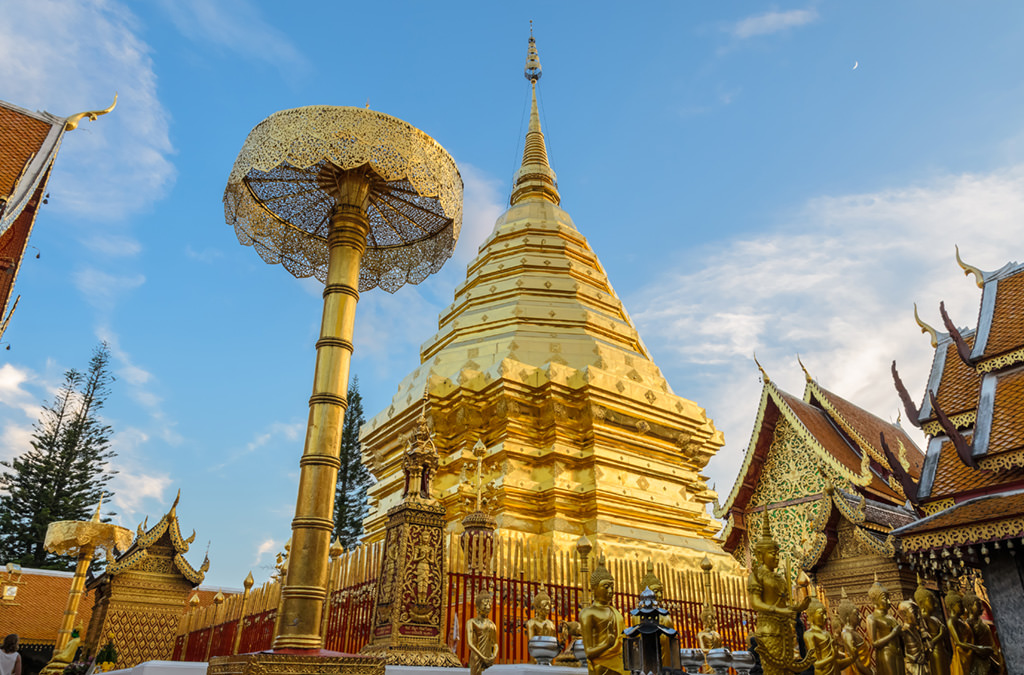
If you are interested in taking the Monk’s Walk up to the temple, which really adds to the experience, then you’ll need to be dropped near Chiang Mai University, opposite D Condo on Suthep Road.
Orange robes are tied around trees, which lead to the way, and it goes past the bijou Wat Pha Lat temple before heading up further to Wat Phra That Doi Suthep. It will take around two and half hours and is only recommended for those with decent fitness levels.
If you want to turn the trip into a bigger adventure, you can go on a 6-hour jungle hike that includes the Doi Suthep temple and the summit of Doi Pui mountain.
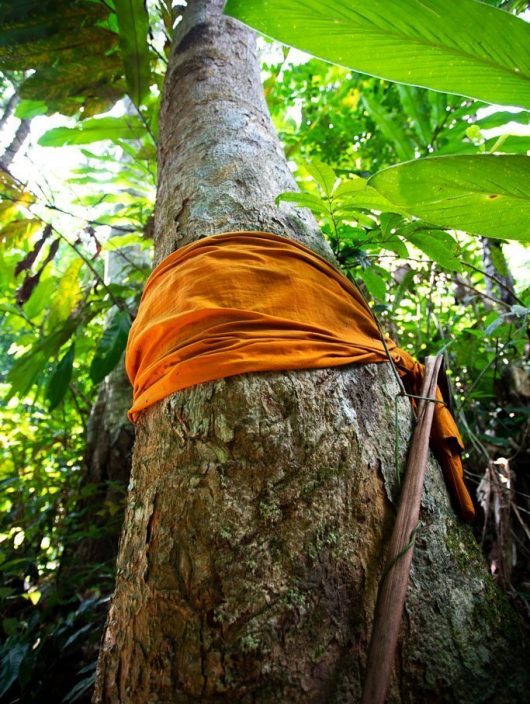
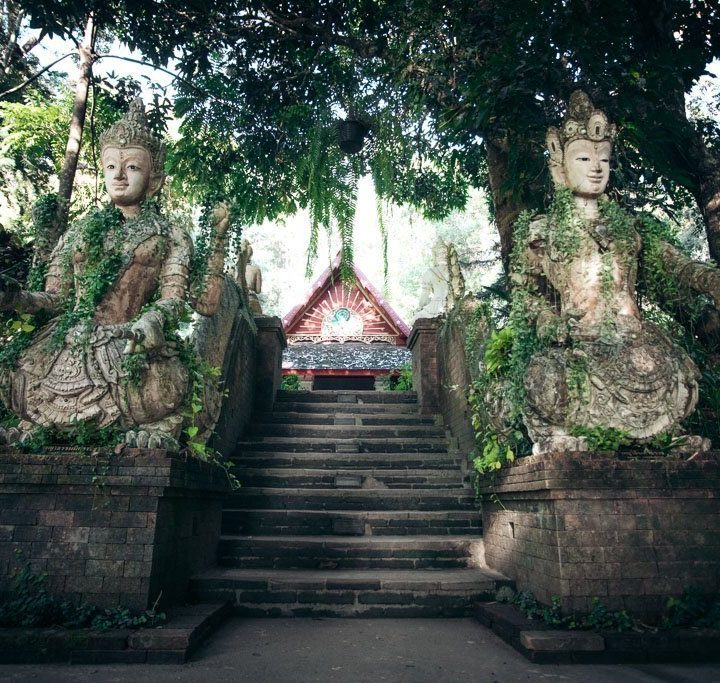
Alternatively, you can take Songthaew from outside the zoo, which are there just take visitors to the temple as well as offering trips further up the hill to Bhubing Palace, where you can visit the stunning gardens and see the Alpine chalet inspired mansions the royal family occasionally use.
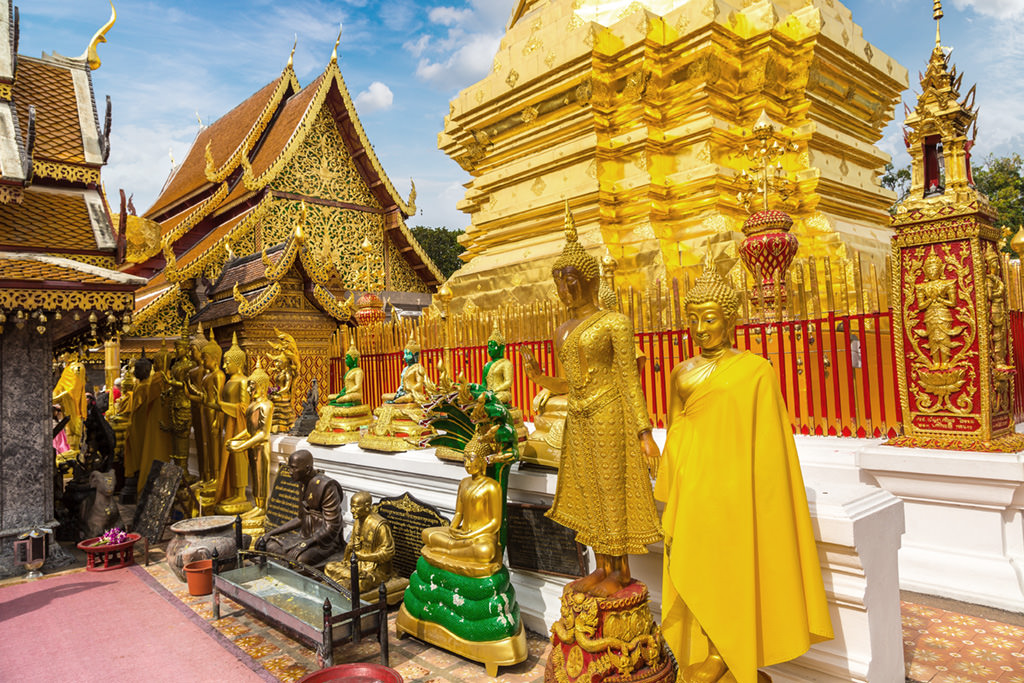
Songkran (the water festival) can be an interesting time to visit Doi Suthep. The Temple Seeker blog has more on Doi Suthep and visiting the temple when pilgrims pray with their super soakers on their backs(!).
Wat Phra That Doi Suthep, Suthep Road, Chiang Mai 50200
Bhubing Palace, Doi Buak Ha, Suthep Road, Chiang Mai 50200
Open daily, 8.30pm until 3.30pm
Explore the night bazaar
Chiang Mai has some of the best markets in Thailand. Firstly, there is the night bazaar, which runs every evening is filled with tourists and sells things at tourist prices.
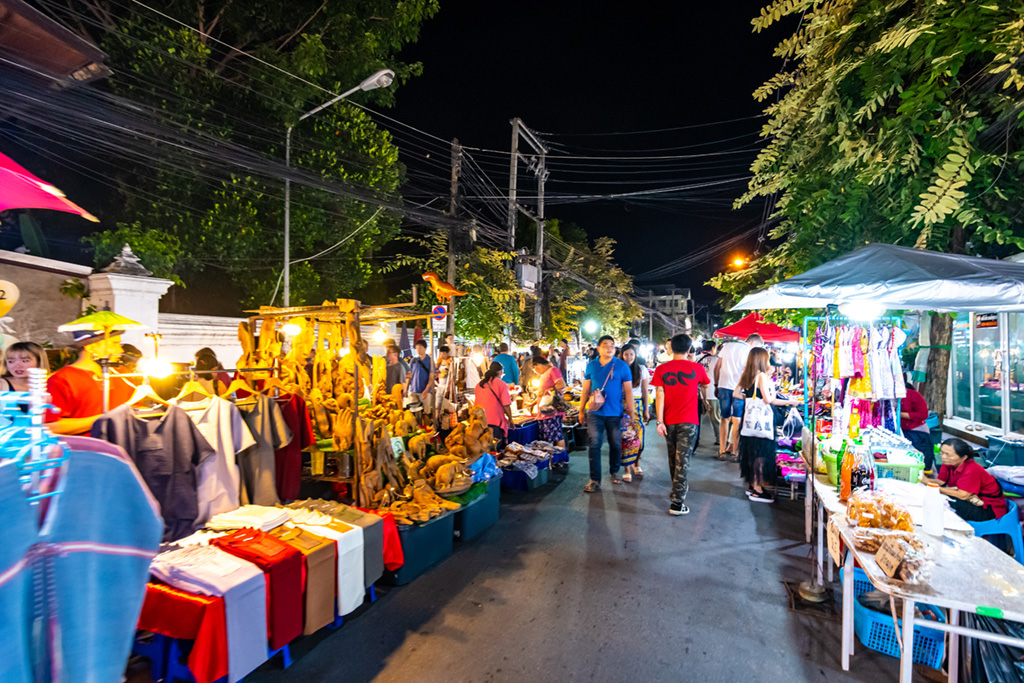
On Sunday you’ll find the walking streets, which are more local in flavour and offer food and handicrafts, including some beautiful items made by local artisans.
Be warned, it gets so busy after 7 pm that progress along the streets is slower than walking pace at times.
The heart of the market is at the intersection of Chang Khlan Road and Loi Khro Road, though it spreads out over several blocks and is easy to find.
Market shopping with the locals
For a market experience that’s genuinely Thai and an absolute must for those who love food, try Warorot Market.
It’s one of the oldest in the city and is located just off Tha Phae Road, only a few minutes from the Night Bazaar area.
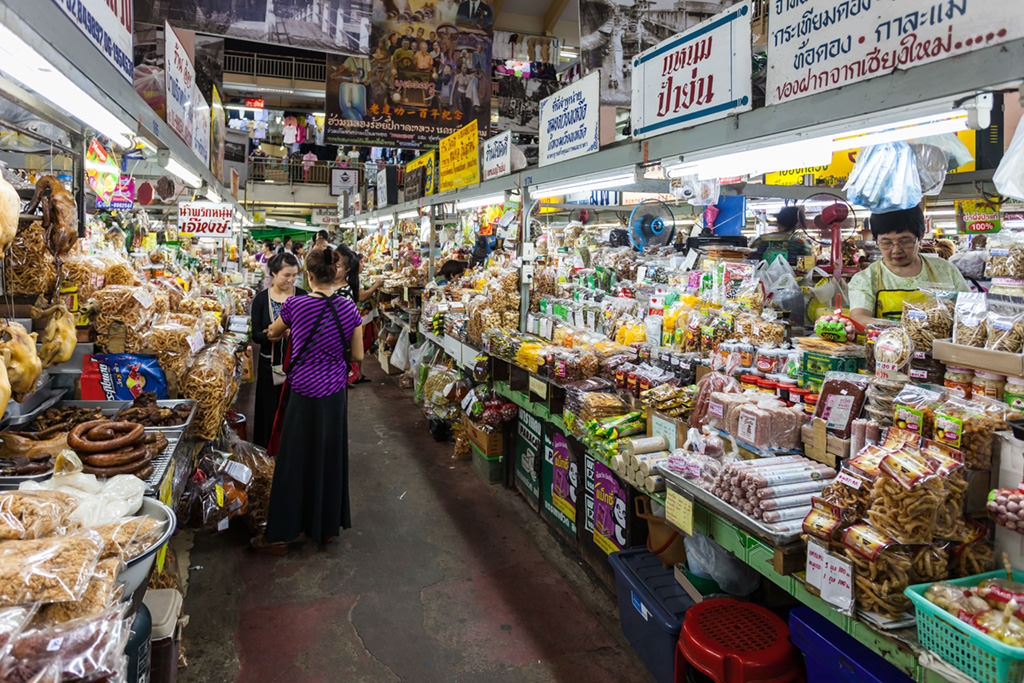
The edge of the market seems to spill into the street and here you will find fruits and flowers of every colour. The food stalls sell local delicacies and the best range of Thai snacks. Head inside and you will find not only the butchers but also several floors of stalls selling herbs, lacquerware, clothing and so much more.
The prices are some of the best in the city because it has remained off the tourist trail.
90 Wichayanon Rd, Chang Moi, Chiang Mai 50300
Open daily, 5 am to 5 pm
Take a bicycle tour of Chiang Mai
The old city (and much of its newer sections too) is relatively flat, and distances are pretty short, which makes Chiang Mai ideal to explore by bike. For about 50-250 baht (1.50$-8$ USD) you can rent a bike for a day.
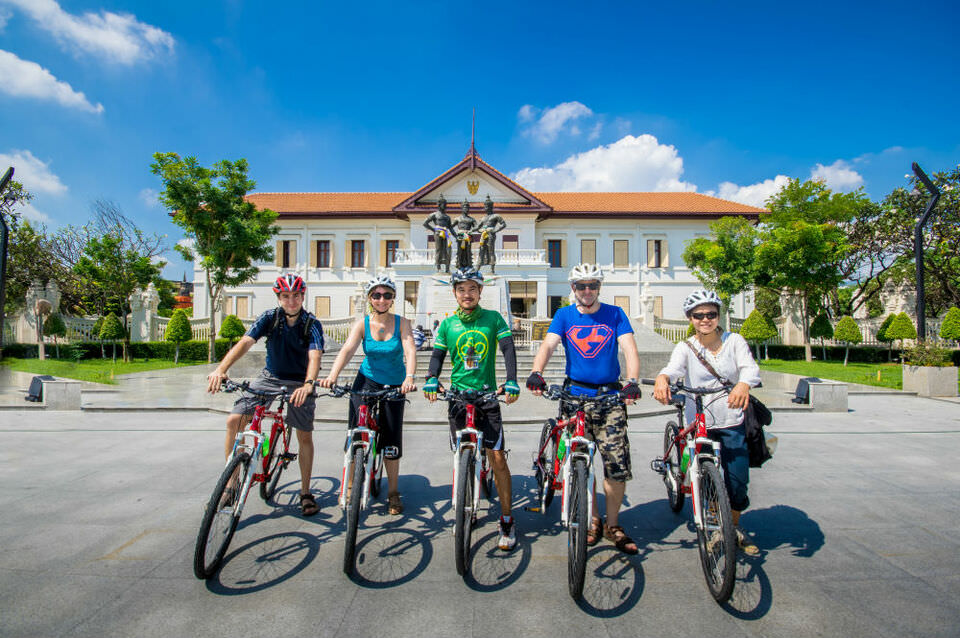
Exploring the city yourself is a great way to get acquainted with it, though having a local show you around lends a certain kind of intimacy to the experience of seeing a new city.
Bike tours of the city are typically done by locals and students looking to make a little money on the side. So if you’re looking to see the city from the eyes of a local, book a bike tour around the old city.
As you cycle through the tight lanes and alleyways, learn about the city’s history as a trading hub, and marvel at the ancient Buddhas at Wat Chiang Man, Chiang Mai’s oldest temple.
Cliff Jumping at Chiang Mai Canyon
Chiang Mai Canyon is a rather romantic name for what is essentially a 48,000sqm body of water contained in what was once a quarry.
Hang Dong is around 30 minutes outside of the city and getting there requires a songthaew; make sure you arrange a return or you may get stuck there! You can see more details here. To make things a bit easier, you can also visit the canyon as part of this organized day trip where you’ll be picked up and dropped off at your hotel.
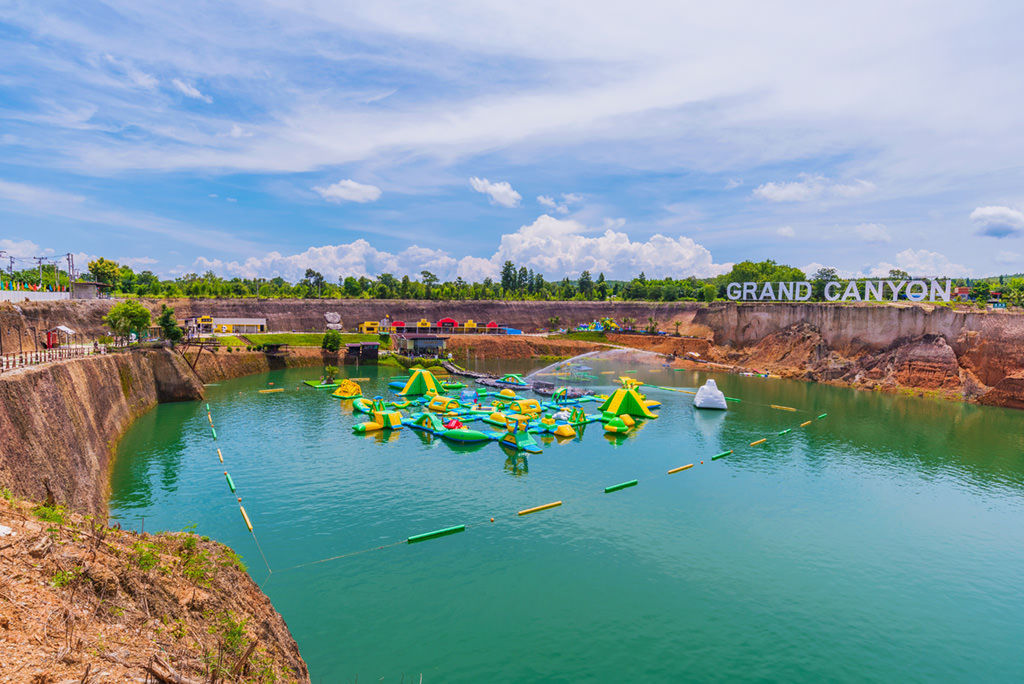
The Grand Canyon, as it is now named, used to be covered with ‘Do not swim’ signs but it has now been taken over by a company that charges entrance. They have expanded the offering beyond the original cliff jump to include sunbathing on bamboo rafts, borrowing an inner tube or even trying out their zip-line. There is a decent restaurant as well as a smattering of food stalls here as well.
It’s not to be confused with another ‘Chiang Mai Canyon’, a place inside the Mae Wang National Park more accurately known as Pha Chor, where you can see several interesting rock formations.
Nam Phrae Amphoe, Hang Dong, Chiang Mai 50230
Open daily, sunrise to sunset
Go spelunking in Chiang Dao
For a great day trip from Chiang Mai, consider heading to the rural areas of northern Thailand.
Located about an hour’s drive north of the city, the Chiang Dao caves are one of the most interesting natural marvels of the region, but getting there is also an adventure in itself. Tours offered to guests looking to explore the caves are offered along with all the gear and know-how you’ll need on this adventure.
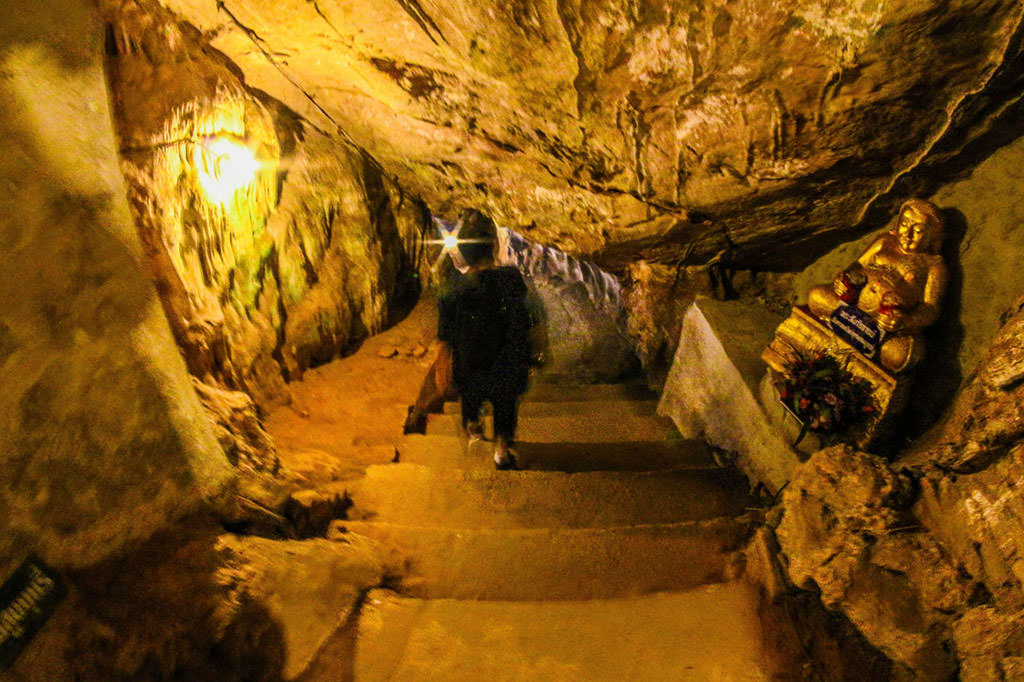
You’ll drive up into the hills of the Thai jungle where you’ll then hop on a kayak, and paddle through the Chiang Dao Valley along the Ping River. Experience the beautiful Thai wilderness with its bamboo trees, riverbanks, and lush green overhead jungle canopy.
Finally, arriving at the caves, you’ll be given a flashlight and some headlamps, upon which a guide will bring you through the beauty of the Chiang Dao cave complex.
The sleepy town of Chiang Dao is a nice place to visit in and of itself; a place to escape the city and enjoy some small sights like hot springs, viewpoints, and waterfalls. Don’t miss our guide to Chiang Dao town.
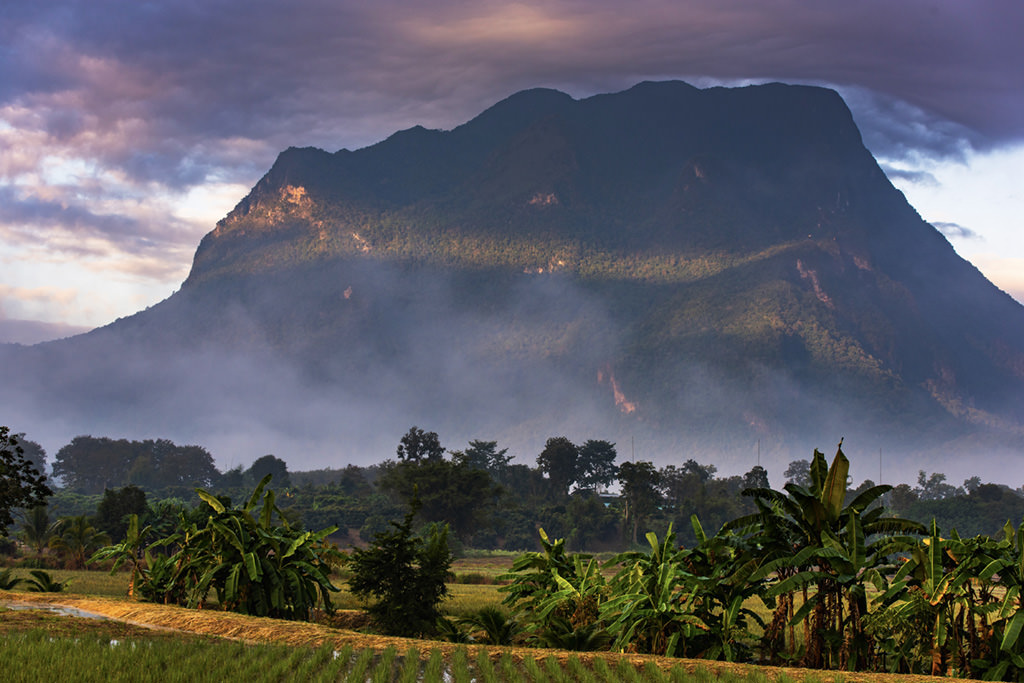
Thai massage by an ex-con
There are plenty of places to get a massage in Chiang Mai, but one of the best has to be as part of the rehabilitation of female prisoners in the city. Not only are these women experts, having been given excellent training, it also allows them to earn a living without going back to a life of crime. They are friendly and welcoming, and most of them speak a little English.
If you have never had Thai massage, it’s a combination of pressure points and yoga-style stretches. At some places, you will get to wear an attractive pair of pajamas. Dotted across the city are Lila Thai Massage, who hire ex-prisoners and offer a range of treatments, the most popular being a foot massage.
There is another popular option, which is the Chiang Mai Women Correctional Institution Vocational Training Center, where treatments are offered by current inmates as part of their rehabilitation. The guards are on duty, but the experience is relaxing as well as being more unusual than your average Thai Massage in Chiang Mai!
Lila Thai Massage, 37 Rachadamnoen Rd Soi 7, Chiang Mai 50200 and four other locations — Open daily, 10 am to 10 pm
Chiang Mai Women Correctional Institution Vocational Training Center, Si Phum, Chiang Mai 50200 — Open daily, 8.00am to 4.30pm
Brave the rapids in the Thai jungle
While Chiang Mai can keep you busy with its markets and temples, it’s the surrounding outdoors that makes this city such an excellent base.
A great way to experience the nature areas north of Chiang Mai is by rafting. The Mae Taeng River has rapids varying from Class III to Class IV depending on the season — these are rapids that are rated moderate to wild, so they’ll definitely bring you some excitement!
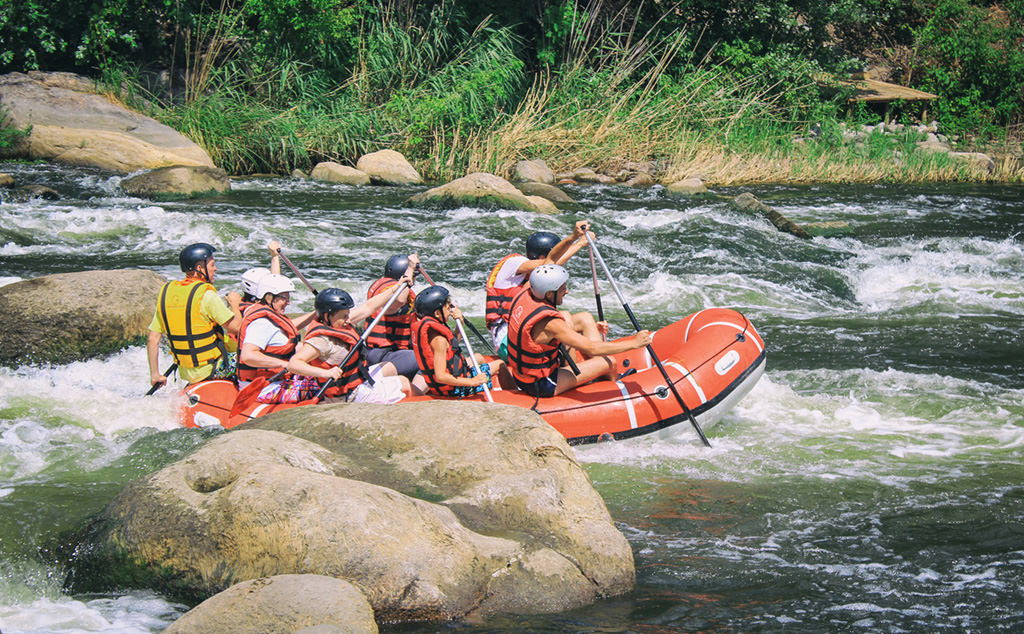
But don’t worry, to join all you need is an adventurous attitude with no prior experience needed. The rafting sections vary in length, though going down the 10-kilometer section will ensure a full day’s worth of fun.
First, you’ll trek through the jungle hiking along the paths and by the river. Enjoy the serenity of nature while you hike and hear the birds chirp, the water flow, and spot the vibrant flora that calls Chaing Mai home. Don’t miss out on jumping in the waterfall to cool off after that hike and before strapping on your gear. Finally, jump in your raft for your trip down one of Thailand’s best white water rafting experiences.
Cooking class on an organic farm
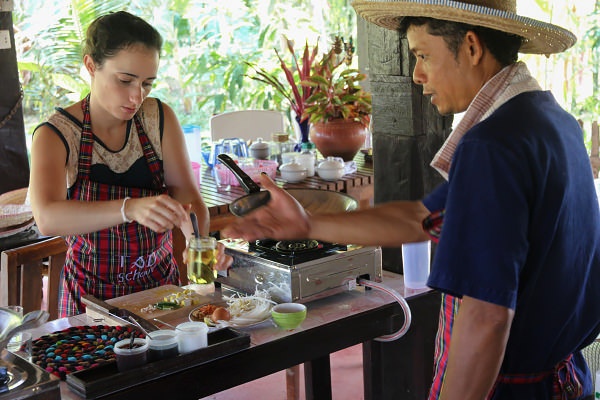
Cooking classes are one of the most popular activities and one of the best things to do in Chiang Mai. Who wouldn’t want to learn how to recreate some of Thailand’s best food once they return home, including green curry and mango with sticky rice?
There are plenty of options to choose from, depending on how much you want to spend and how many dishes you wish to learn. But if we had to single out one experience, it would be Grandma’s Home Cooking School. Their tour can be booked easily via GetYourGuide. You will be picked up from your accommodation and experience a visit to a local market before you head out of town.
This organic is a more immersive experience than those in Chiang Mai city because you get to learn about Thai herbs and pick them from their garden as well as preparing your own lunch. They give you a choice of curry pastes (red, green or yellow) to blend. You’ll also make enough food to take away for your evening meal.
Book online or at their office, which is located at 38 Moon Muang Soi 9, Chiang Mai 50300
Learn the art of Thai Boxing
You may be on vacation, but that doesn’t mean you shouldn’t stay in shape. Instead of hitting the treadmill, why not hit the bags instead — Thai-style.
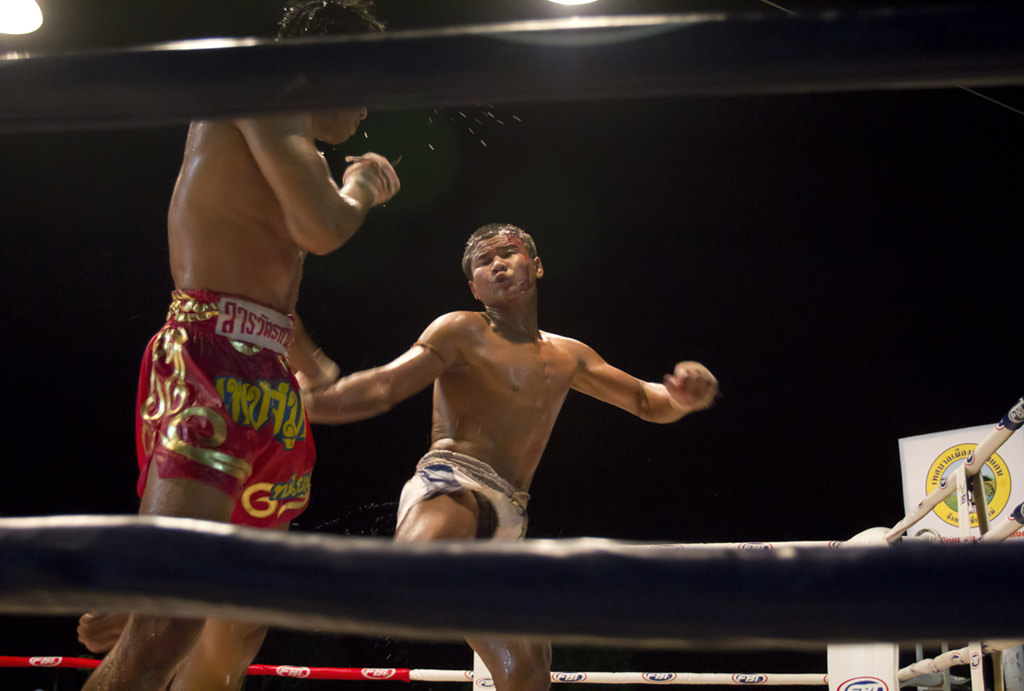
Thai boxing or Muay Thai is known as the “art of eight limbs”. The martial art can be traced back to the 16th century though over the years the art form inter-developed alongside most westernized boxing to become Muay Thai most people are familiar with today.
Classes and gyms are offered to anyone who would like to try it out and are often also taught in English by Muay Thai professionals. Open to complete beginners, you can learn some practical moves and train with others in a local surrounding and safe environment. You can easily book a Muay Thai session here.
Climbing Bua Thong Sticky Waterfalls
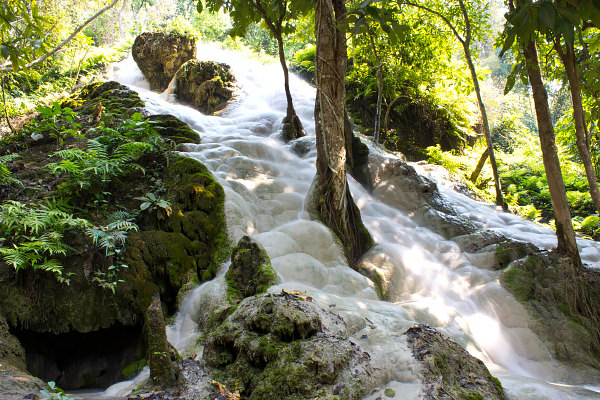
90 minutes north of Chiang Mai in the Sri Lanna forest you will find some of the best waterfalls in the region. They may not be the tallest or have the most tiers, but they have a natural quirk that makes them the most fun to climb.
As the water tumbles down over the rocks it deposits a mineral residue, which hardens and feels like a scouring pad under your foot. Algae, which makes rocks so slick, can’t grow here and the scaly nature of the mineral means that your feet grip to them as you climb. In fact, the name they go by more often than not is Sticky Waterfalls.
Getting there requires hiring your own transport, or finding a group who are travelling there to share a Songthaew. Parts of the waterfall are quite steep, so it can be a challenge and you will definitely find yourself with a few sore muscles the next day! Avoid the shaded areas, as they tend to be more slippery than sticky. There are open-air restaurants near the entrance; climbing makes for hungry work so you’ll probably want lunch afterward.
You can travel to the Sticky Waterfall independently, or you can book this cycling tour to the Sticky Waterfall at Viator. You’ll get to your starting point by river long tail boat and then go by mountain bike through the jungle (supported by a vehicle). This is a really fun trip for families.
Moo 8, Mae Ho Phra, Mae Taeng, 50150
Open daily, sunrise to sunset
A day with the elephants
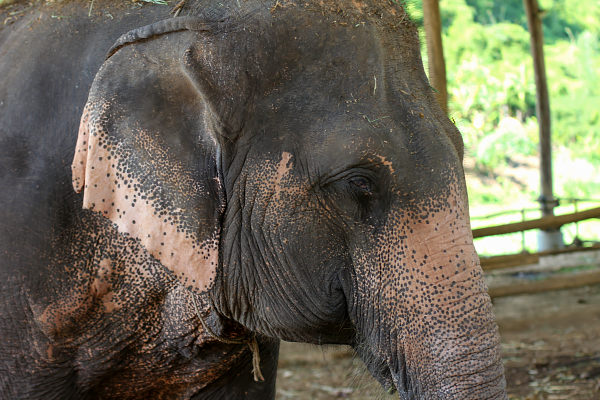
Spending a day with elephants is a must-do activity in Chiang Mai. Elephants are the national animal of Thailand and used to make their home here, although there are now only a couple of thousand still in the wild. The best way to encounter these beautiful creatures is in an enclosed elephant sanctuary.
Although riding an elephant might be a personal dream, this can upset the animals and involves a traumatic process of being broken in. Camps with the best welfare programmes will not offer any riding. A park that is well worth visiting and which is recommended to book at least a month in advance is the Elephant Nature Park, which offers day and week visits and volunteering opportunities.
The day visit is still the most popular, and numbers are limited so you won’t feel surrounded. You get to feed the elephants, walk around the park with them and watch them play in the water. The staff is fantastic and it’s educational as well as fun. It’s not cheap, but the money helps rescue other elephants who are being exploited.
Chiang Mai Office for booking: 1 Ratmakka Road, Phra Sing
Coffee in a tree house
Northern Thailand is known for its fertile lands, which are ideal for growing coffee beans. It’s no surprise that there are plenty of coffee shops in Chiang Mai. But if you want your cup of joe with a difference, it’s worth heading one hour out of town to The Giant Chiang Mai.
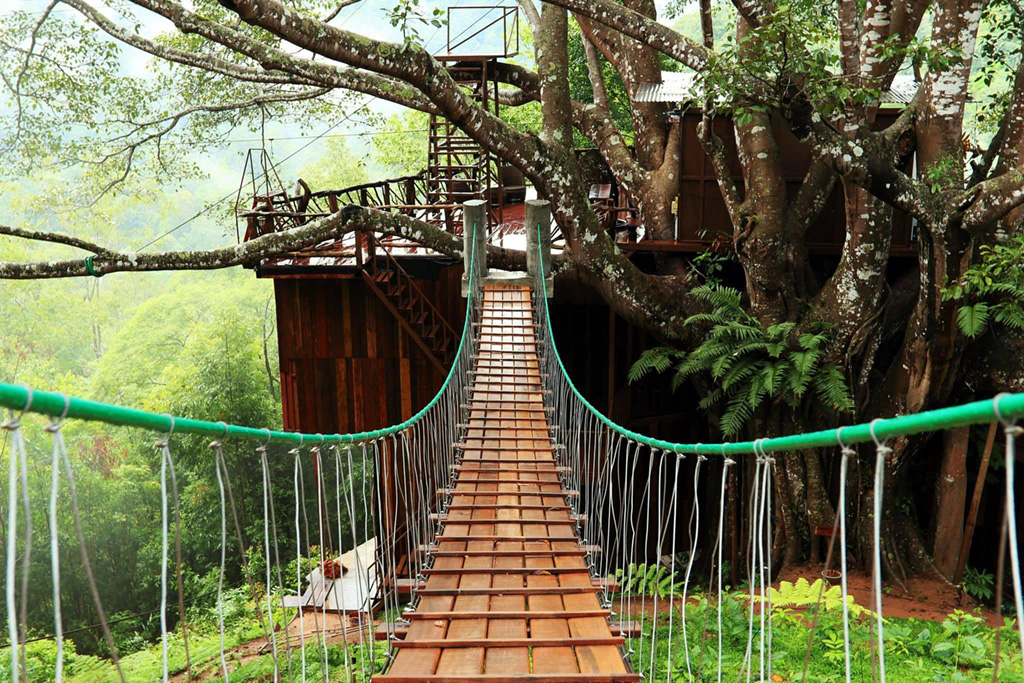
The Giant is first and foremost a B&B, but for those coming to visit for the day can experience the tree house at the coffee shop, which you access via a couple of rope bridges. It is a fun experience and the coffee is excellent. The food isn’t the most exciting, but if you are hungry you will find enough to keep you satisfied.
Sitting among the branches of the tree in the lush jungle that covers this area is a magical experience, especially for those who grew up with grand treehouse dreams of their own. A recent addition to The Giant Chiang Mai is a zip wire, although it’s hardly thrill-seeking.
To make the most of travelling this far out of the city, consider doing a trek at Mae Kampong Waterfall first, which has seven tiers and a natural pool to swim in.
Baan Pok Village, Huai Kaew subdistrict, Mae On 50130
Celebrate Thai new year with a water fight
Depending on what time you plan on visiting Thailand, Songkran (or Thai new year) is one of the biggest celebrations.
It takes place every April 13th and lasts for about 3 days following. Like many other Asian cultures, the celebrations coincide with the Lunar new year but what makes Songkran uniquely Thai is the way it is celebrated. Different regions in the country will have varying traditions, but the big one for Chiang Mai is the water fight.
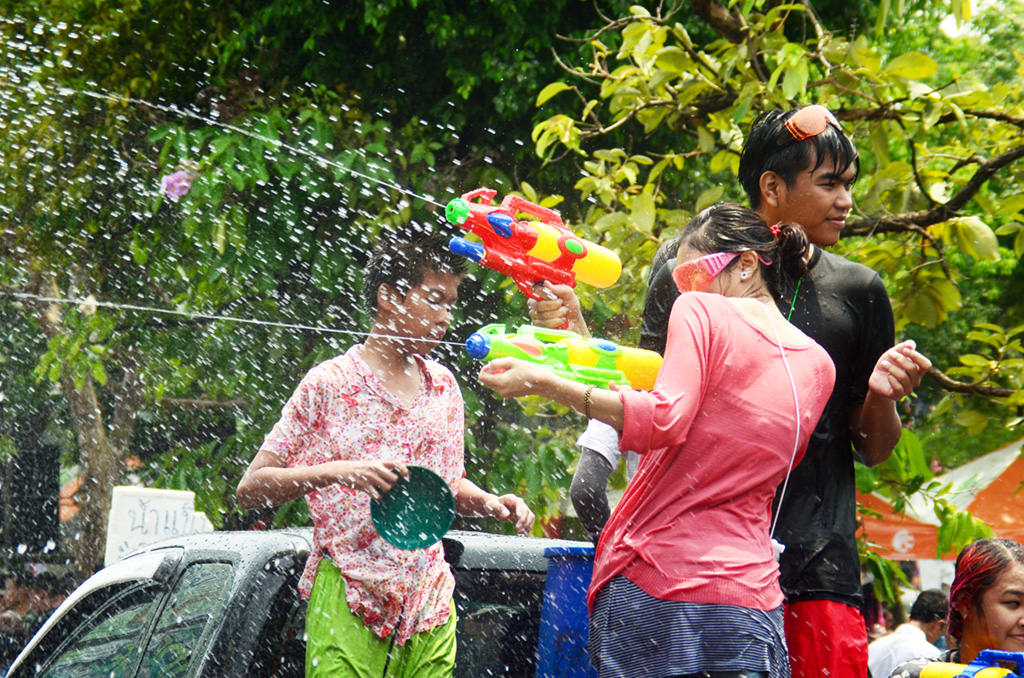
Framed as a ritual cleansing (but mostly just a lot of fun), the city becomes a huge celebration of parties, music, and water fights.
People carry water guns, buckets, and pretty anything else that can contain water splashing passersby. Music plays on every street corner, dance parties happen until the early morning hours, and everyone gets wet.
Floating Restaurant at Huay Tung Tao Lake
It’s a mystery why this lake isn’t more popular with visitors, but this is part of its charm. It still feels like a local experience, and that isn’t easy to find, especially not a mere 20 minutes away from the city centre.
Those who come here tend to make a day, or at least half a day, which is Thailand means one thing: lots of food!
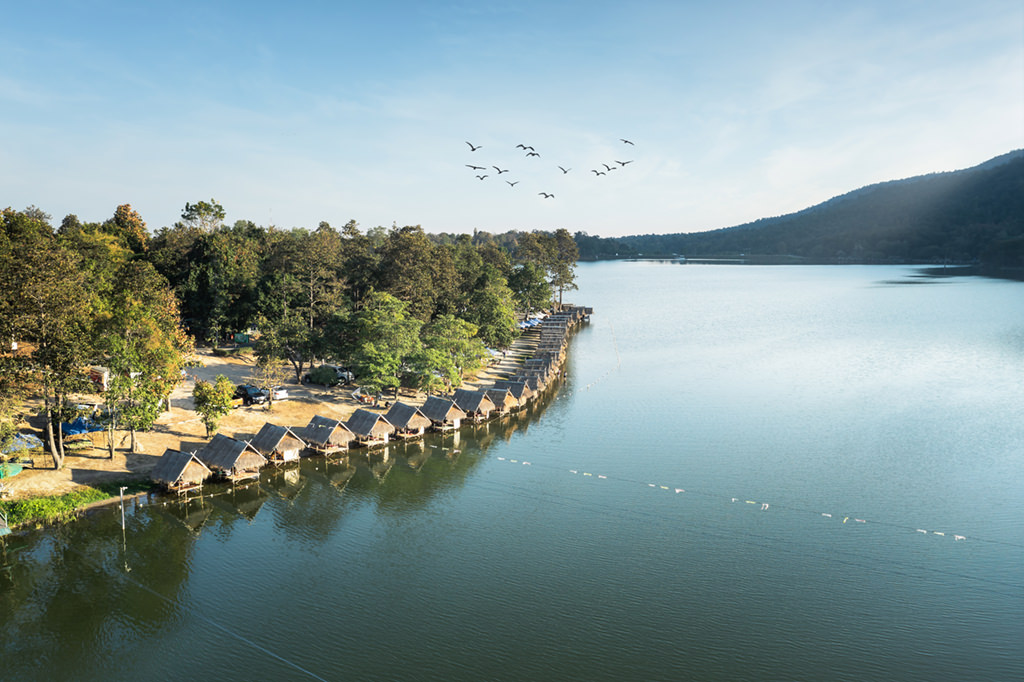
There are plenty of great restaurants bordering the lake, but a favourite is the one where you feel like you are floating on water. Made from bamboo and safely anchored to the shore, you can enjoy your som tam and curry in your own hut whilst ‘floating’ on the lake. Most of the restaurant names are in Thailand, but try restaurant #2, which is also handy for the lake’s bathrooms (not too close though).
Eating isn’t the only activity that you can enjoy whilst at Huay Tung Tao Lake. You can also swim or rent a pedalo if you want to be out on the water. If dry land is more your thing, you can rent a bike and ride along the shore on the dedicated cycle path.
Songthaews will bring you to the lake, but it’s worth negotiating for the return journey too, so you don’t get left here after sunset.
107 Don Kaeo, Canal Road
Open daily, sunrise to sunset
Doi Inthanon National Park
Doi Inthanon is Thailand’s highest mountain and is one of the best day trips from Chiang Mai.
It’s a couple of hours outside of the city. The best way to get the most out of your visit is to hire a car that can drive you around the various must-see sites in the park.
Start by taking the Kiew Mae Pan Nature Trail through the fairytale forest and out onto the ridge above. The views are the kind that makes you stop and stare and you’ll probably need to catch your breath because it takes a good two hours. From here, you can see the twin pagodas dedicated to the former King and current Queen Mother of Thailand, which should be your next stop before heading to the summit.
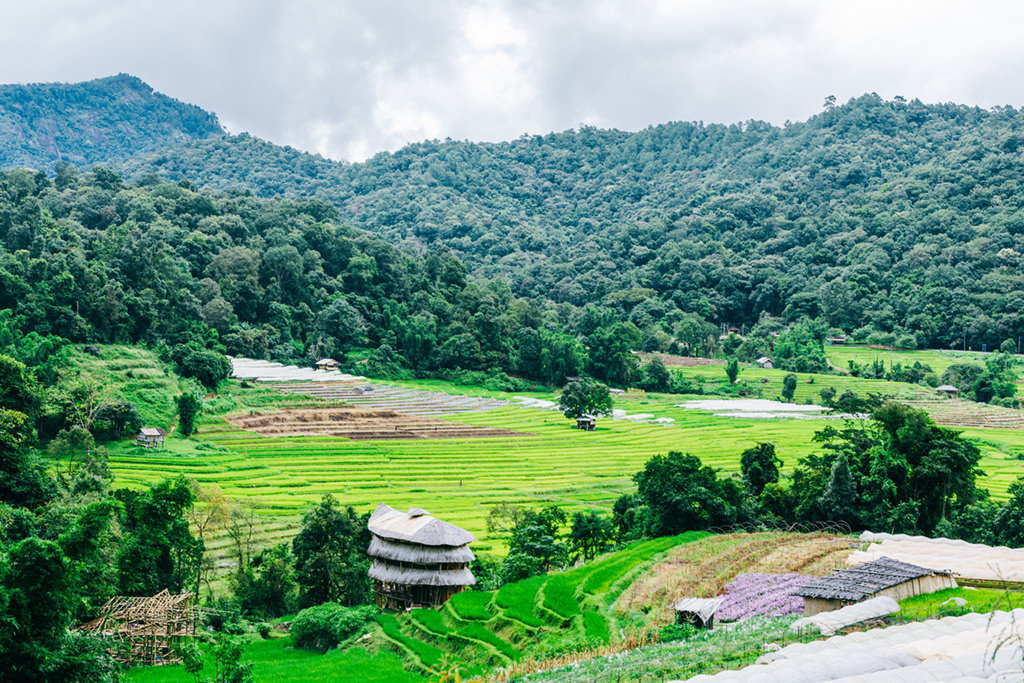
Waterfalls are ten a penny in Chiang Mai, but if you have time, make a detour for Sriphum Waterfall. It’s the tallest in the region and extremely photogenic. There’s another hike, but there are vendors at the start so you can refuel.
If you have time, we would recommend staying overnight and making the most of the National Park. It is one of the most beautiful areas in Northern Thailand, and there are plenty of affordable homestays here.
You can opt to explore independently, or you can visit the National Park with this day trip, which includes submitting the highest mountain in Thailand.
2 Ban Luang, Chom Thong District, Chang Wat Chiang Mai 50160
Open daily, sunrise to sunset
Go on the Chiang Mai Night Safari
Taking a page out of Singapore Night’s Safari, the Chiang Mai Night Safari brings guests around to experience and see the animals that don’t typically get seen during the day. Explore the grounds by foot or open-sided tram and see fierce predators as well as humble herbivores.
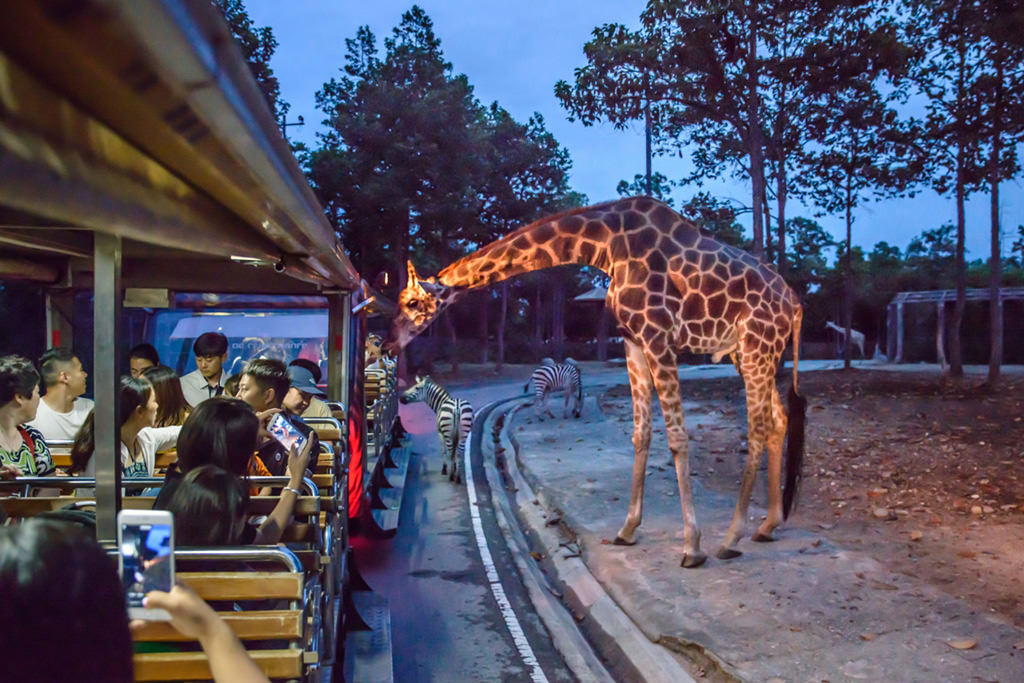
Bengal Tigers, Lions, Hyenas, and other kings and queens of the jungle are the highlight of the nighttime safari tours. Typically animals that sleep during the day don’t get spotted, so instead of heading out in the daytime to catch a view of Thailand’s famous fauna, consider a night safari for a unique look into the animal kingdom.
33 Moo 12, Nong Khwai, Hang Dong, Chiang Mai 50230
Opening hours: 12:00 – 21:00 hrs
Feel artsy and shop at Bor Sang
While Chiang Mai has a plethora of markets and street vendors, one that typically gets overlooked in Bor Sang village market.
The market specializes in bright, floral paper umbrellas, all handcrafted and designed by locals. The quality is outstanding and the people making the umbrellas have been doing so for years making them experts at their craft.
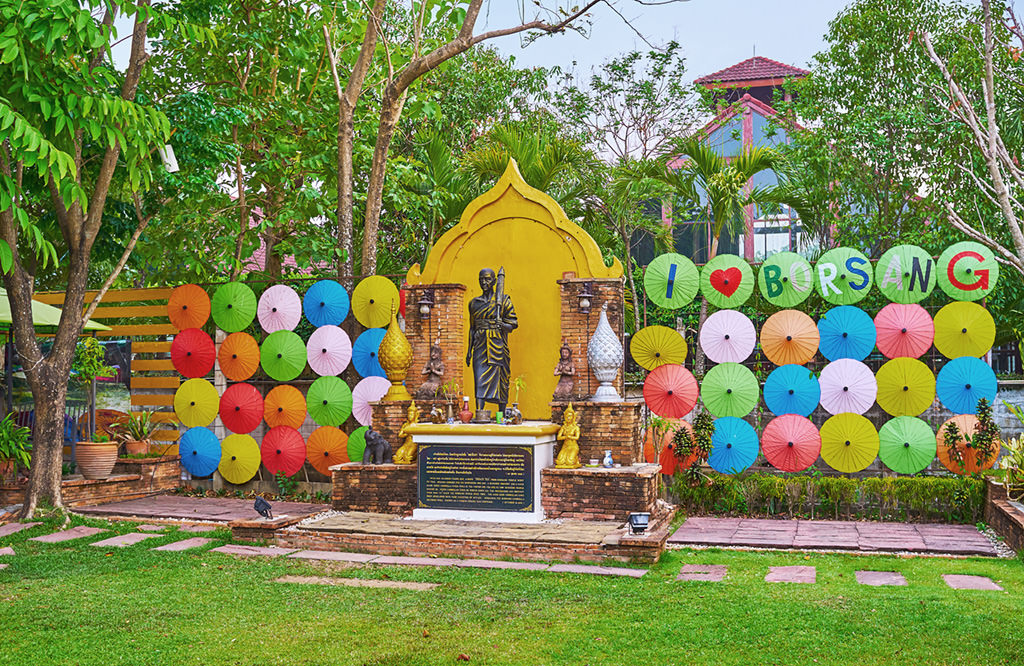
The name “Bor Sang” has become so synonymous with these umbrellas that it is essentially a cultural emblem of Chiang Mai itself. Bor Sang is so big on its umbrellas that an umbrella festival is held yearly in January featuring parades, exhibitions, and a “Miss Bor Sang” pageant.
Hang out with a monk
You can spot monks typically working around temples in Thailand but also pretty much elsewhere in the city. Their iconic saffron robes are hard to miss and if you’ve ever been curious about the lifestyle of a monk, now you can get to know them a little more personally. Foreigners who are unfamiliar with the monks can now learn about them.
There are five temples in Chiang Mai that offer “monk chat”. The experience is pretty much what it sounds like! You and a monk sit down together, and you get the chance to ask them questions. They are open-minded and generally willing to talk about whatever pops into your head.
Philosophy? Culture? Religion? What they do for fun? Ask away!
You can arrange a monk chat locally, or consider booking a monk chat with BackstreetAcademy, a social impact platform that helps locals earn an additional income.
MAIIAM Contemporary Art Museum
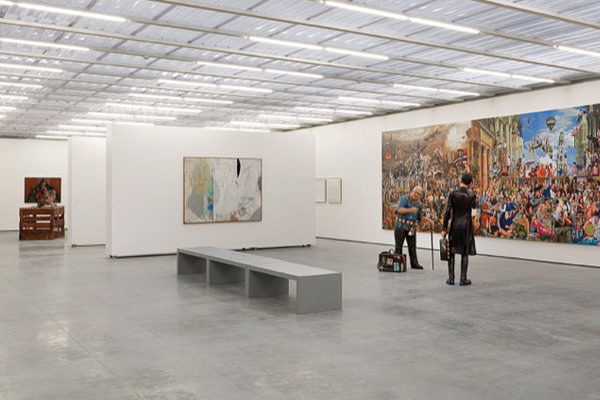
If you are into art then Chiang Mai is a really creative place to be. Be sure to look out for The Art Map, which can be picked up at the tourist information centre and has all the gallery and event information you’ll need.
One gallery that shouldn’t be missed is the MAIIAM Contemporary Art Museum, a half an hour outside the old city walls. Opened in 2016, it is a fantastic showcase of Thai art, with permanent displays and temporary exhibitions.
The building the collection is housed in is also stunning, with a mirrored façade and an open-air courtyard. The permanent collection runs from the 1980s and includes the wall filling Super(M)art Bangkok Survivor, a triptych to the different facets of Thai culture, including religion and politics.
MAIIAM Contemporary Art Museum has also displayed some of their pieces in their on-site café which serves Thai and international food as well as coffee and cocktails.
122, Moo 7 Tonpao Amphoe San Kamphaeng, Chiang Mai 50130
Open Wednesday to Monday, 10 am to 6 pm
Don’t miss our travel tips for Chiang Rai, a smaller city located four hours north of Chiang Mai. Don’t also miss our guide to Pai, a small tourist town near Chiang Mai, and the mountain town of Chiang Dao.
Original post by Claire Mykura in 2018; updated and expanded in 2022 by Indie Traveller team. Monk’s Walk photos CC Olly Gaspar.
Some links may be affiliate links, meaning I may earn commission from products or services I recommend. For more, see site policies.
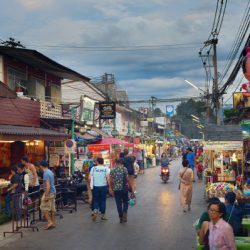
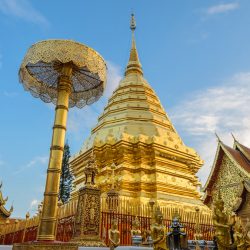




Hello, I am PARV UPADHYAYA. I am an emerging travel blogger. Recently I created my own website and I want to promote it. So I am Sharing my website. Please share with Everyone. Thank You!
Thank you very much for all your tips!
I will visit Chiang Mai in February and already noted down a bunch of your ideas. 🙂
My favorites are three house and the swimming restaurant.
Wow, so cool! I’m actually considering travelling to Chiang Mai in 2019, so this was perfect! Going to spend at least two days with elephants, but the tip I’m hoping I for sure take with me If I go is the massage from the female prisoners as part of their rehabilitation program – that is just so awesome!
Hey Marek! These are some exceptional things to do when in Chiang Mai, especially for first timers there! A spa and swim with the elephants were by far my favourite things I did when in Chiang Mai. 🙂
As a reasonably experienced traveler, but one who has never been in Thailand, or any part of Asia for that matter, I found myself wanting to do everyone of these things as I read. In fact, it made me think, maybe I should look for some flights.. If they happen to be touristy, okay, so are most of the places that people visit. They are popular for a reason, and the presence of other tourists actually helps a new visitor become comfortable in a location. After a few days, as you know, an experienced traveler then goes off on their own, or finds a local guide, and finds some of their own awesome things to see and do. Bookmarking, because I really did just add Chang Mai to my list.
I just don’t get the whole travel blogging industry these days. Originally people touted travel blogs as the perfect alternative to guide books because they’re up to date and can give a more personal account of a place and the activities there. These are supposed to be ‘unusual’ things to do in Chiang Mai, which is bloody ridiculous. Which list of ‘Things to do in Chaing Mai’ doesn’t contain Doi Suthep, a cooking class, seeing some elephants, visiting some markets? Pretty much everything on here is super generic and if you arrive in Chiang Mai and chat to anyone who’s been in town for more than half an hour they’ll tell you pretty much this exact list. ‘Ex-con’ sounds cool and edgy and what not but it’s still one of the most popular things in town. Do people who write travel blog posts just assume that no one who reads it will have ever been to the city/country or have never read anything else on it and that they’ll be thought of as super original? I don’t get it.
Sorry, total rant but it kinda grinds my gears because so many blogs are becoming redundant with exactly the same cookie-cutter posts about fantastically popular destinations just to get page traffic, not because it’s good writing or new information or something useful that people can’t find in 2000 other sites out there. What a waste.
Hey Sarah. I get ya, but I think you took the title a bit differently from intended! They’re meant to be unusual (several anyway) for those coming to Chiang Mai – as I’m pretty sure many people might not have experienced something similar elsewhere. What might be ‘been there, done that’ to an experienced traveler is still fresh and magical to someone arriving for the first time.
Loads of people constantly arrive to this blog looking for travel tips about Thailand, so I feel it’s useful to provide guides to the popular spots. This might hit some familiar beats if you’ve already been, but having these articles also makes it possible to cover more obscure or off the beaten track stuff elsewhere (this is always fun to do, but actually gets read by very few people… one often has to subsidize the other!).